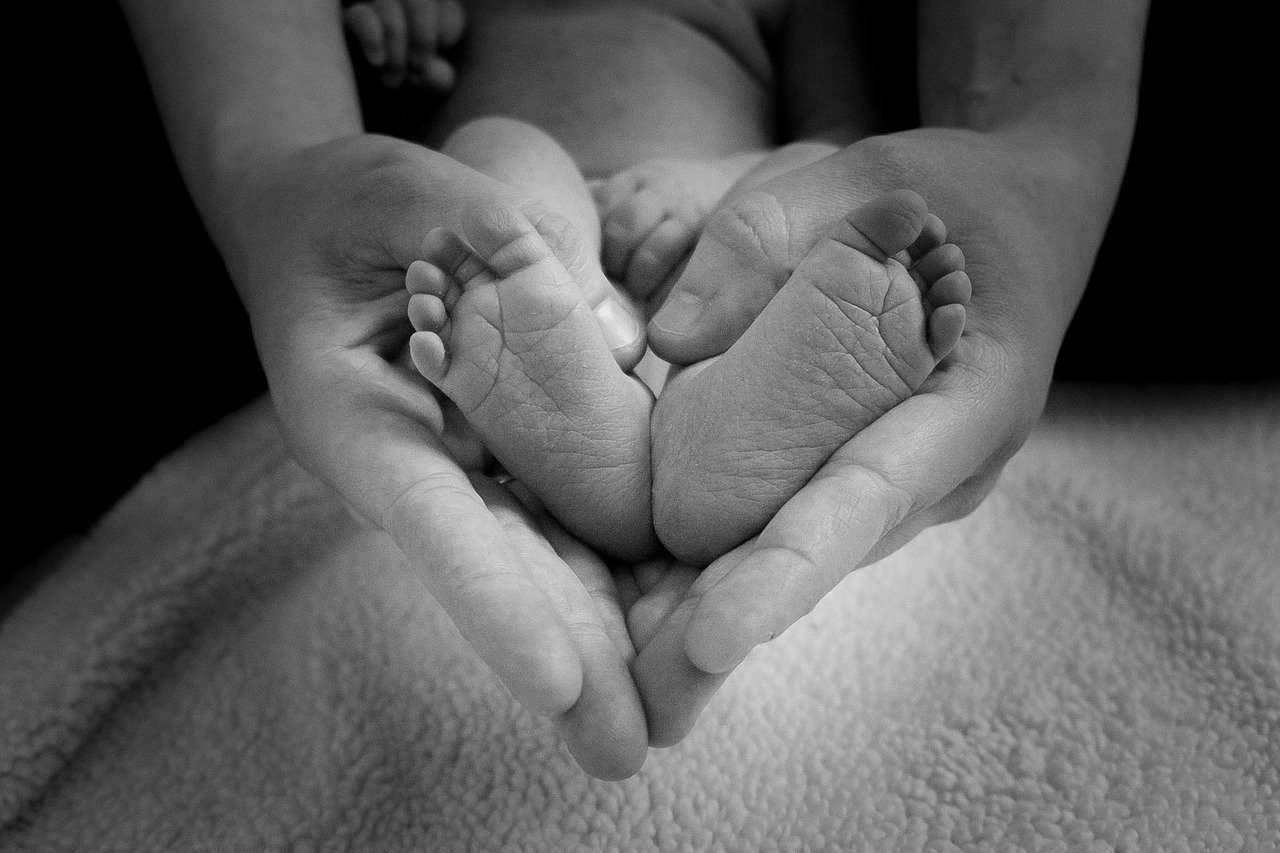Childbirth is not less than a race; it’s the most challenging thing for a mother. You will want to prepare for labor in every way to make your baby’s birth easier and faster. There are countless things you can do to try for a fast, easy, and positive labor experience.
Now days there are lots of way to get knowledge about it, we try to get information from everywhere. It can be so exciting to prepare yourself for labor and delivery. There are so many suggestions, dos and don’ts that sometimes, feeling like you have to do all the things to have a perfect birth, which ends up creating extra and often, unnecessary anxiety.
But there are ways to simplify the process. So that you can spend more time enjoying your pregnancy rather than only preparing yourself for labor.
When I was pregnant for the first time, I was very happy but so scared also. I was keep reminding myself that I have a very less pain tolerance and the thought of labor was only increasing unnecessary stress for me. At that time the epidural was the only option in my mind. At last I choose to do my own research and took advice from my doctor. I educate myself about the whole process, read about the signs of labor, learn some techniques for pain management during the labor and prepare myself for labor and delivery.
Although epidural was still in my mind as an option but I explore more and learn about other possibilities that I can try to make my labor easy and fast.
Table of Contents
20 tips to prepare for labor and childbirth
Here are my top 15 tips to prepare for easy and fast labor.
1. Stay relax, Manage stress and don’t over think
When we are stressed, even small thing can give as so much of anxiety and we start to over think about it. Child birth is not a small thing that is why it’s called labor, we have to tolerate some pain, keep that in mind.
I will not say that labor is not painful; it is, but it doesn’t mean that it’s unbearable. Women are made to do this and they can do it without any problems. So try to stay relax and don’t over think about it.
Try not to listen horror stories of labor; it’s not necessary that your story will also be the same. All women are different and no two births are same. That is why try to figure out best option for you and educate yourself.
Manage your stress, do some yoga, meditation, listen music, read books, watch some comic shows, communicate with other, accept your fears and discuss them; don’t over think about it, go with the flow.
2. Learn about positions to prepare for labor
There are a variety of laboring positions. Some positions will ease your pain while others can even help with the position of the baby. The traditional labor position, lying on your back, puts pressure on the pelvic nerves which can actually increase pain. Changing positions during labor, lying on your side or walking around, may offer benefits and reduce little bit pain. Sitting up improves blood supply to the pelvic muscles. Lying on your side reduces the pressure to your perineum.
Learn about different labor positions and practice them beforehand. Find out the most suitable position for you by changing them and ask your partner to assist you.
When to go to the hospital for labor: sign that labor has begun
3. Train you partner and hire some professional help like doula to support.
Child birth can be easy, messy, complicated or emotional. Always choose wisely who can stay with you during labor, choose the person who is most trusted to you. Train your partner about the whole process, read together, work on strategies together to manage the pain, take classes, and educate your partner along with you, so that he can support you during the labor. A healthy relationship can help you so much during that time. Research shows that poor relationships during pregnancy are a large contributor to stress.
Doulas are non-medical professionals who are trained to provide emotional and physical support and information to women about pregnancy and during labor. Studies always shows that with the support of trained doula, labor times are shorter and the need for epidurals and C-sections were decreased by about half.
Click here to know about Epidural (Painless childbirth) during labor and its possible side-effects
4. Stay at home as long as possible.
Labor is a long process and there are 4 stages of labor. The first stage is the longest one and the easiest one also. In this stage your cervix start dilation from 1cm to 10 cm and sometimes it takes too long. Initial contractions are also slow and can be 15 to 20 minute apart. So try to stay at home until your contractions are 5 minute apart and 1 minute long. At home you can be relaxed and stay calm. Home is always a comfortable place for everyone. Hospital environment is different. At home you will be free to move about in your own comfortable surroundings and eat and drink what you need.
5. Learn about breathing exercise to manage pain
Breathing is way to relax your muscles and brain. When you breath, it give a signal to brain to stay relax. Practice deep breathing exercise throughout your pregnancy several times a day it’s one of the best ways support your physical, mental and emotional state. In tense or stressful situations, breathing gives your brain enough oxygen to stay alert to take the next right action.
6. Try to take a nap
The first stage of labor is the easiest one when your cervix starts dilating from o to 10 cm; it’s not that difficult to take a nap at that time. Try to take a nap in between contractions whenever you feel. Keep your energy level up by taking small naps in between. Sometime, during labor, your contractions can often stop when you’re fully dilated. The process of labor is very tiring, small naps will help you to finish that process smoothly and with full of energy.
7. Snack regularly during the labor
Lots of energy is needed during labor. By snacking regularly and drinking plenty of water while labor will make a massive difference. Fill your hospital bag with lots of small snacks and have them regularly to keep your energy levels up.
8. Keep moving and stay active while labor
Walking is the best way to keep moving while labor and to reduce pain. Movement can help your labor progress and relieve discomfort. If you walk around during labor, you should need less pain relief and are more likely to actually have a shorter labor.
9. Make your mind to cop some pain
Labor is a painful process and it’s not easy but it doesn’t mean that it’s not bearable or impossible. Know your strength and keep reminding yourself that you can do it. Unfortunately, there isn’t a way to avoid pain in bringing a baby into this world. Even with pain medication or a C-section, you will most likely experience some pain through the process. So just try to focus on the pain management and the purpose of pain. You have to do the hard work to get a beautiful result in your hand, so make your mind to bear some pain and prepare for labor.
10. Educate yourself about labor and join some prenatal classes
You must have heard theses lines that, “Education is the key of success”, the same applies for labor. Educate yourself about labor and delivery. Get the information from everywhere but try not to co-relate your labor with their experiences. Everyone is different, so the labor is also different for all.
Join some prenatal classes in your third-trimester. These classes are meant to teach women and their partners about the different aspects of pregnancy and the delivery itself. If you’ve never witnessed a birth before these classes deal with preparing for labor, what to expect during labor and coping techniques.

11. Yoga and Kegels
Attend some yoga classes during your pregnancy. Yoga has many benefits such as practicing breathing yoga will help you during labor to stay relay and manage pain. Yoga prepares the body to be upright in labor—standing, kneeling, hands and knees and squatting—and these positions keep the pelvis loose and open for easier positioning and descent of the baby.
Kegels are basically pelvic floor exercise. Do you Kegels throughout your pregnancy to make your pelvic muscles strong. Pelvic floor exercises help many women avoid medical interventions. Strengthening these muscles, by squeezing the walls of the vagina tightly together and holding for a count of as much as 20, may make pushing more efficient and prevent poor bladder control and hemorrhoids.
9 signs that will tell you labor is coming soon
12. Consider water birth
Research shows that the mothers who opt for water birth often experience an easier and less painful labor. Being in water will help you to stay calm and relax. Baths during labor should not be warmer than body temperature, and you should avoid bath before the active labor begins. Bath time should not be longer than 1 or 2 hours at a time. Ask for help whenever you want. Choose your birth plan according to your preference and comfort zone will make this process easy for you.
13. Perineum massage
Perineum massage aims to stretch, usually using two fingers, the perineum tissues ready for birth. From around 34 weeks, you can start gently massaging your perineum using some oil, to help prevent tears. You can massage your perineum by yourself or with your partner if you’d prefer.
14. Consider hot or cold pack during labor
Consider a hot or cold pack while labor will reduce your discomfort while labor. Applying hot or cold pack to you lower belly or back during that time may relief some discomfort.
15. Massage and acupressure while labor
Massage and added pressure helps in reducing pain. It gives good signals to brain in stressful situations. A gentle massage on neck and foot can work as a wonder for you during labor.
Acupressure is a technique of applying pressure on some points to release pain. Your partner or birth coach can apply counter pressure with these three techniques.
- Tailbone press. With each contraction, your partner presses on your tailbone with the heel of his hand or a tennis ball.
- Back caress. Your partner lightly runs his fingertips over your shoulders and down your back.
- Pelvis press. While standing behind you, your partner puts his hands on your hips and pulls back on them firmly with each contraction.
15 post pregnancy body changes that nobody will tell you
16. Hypnotherapy
Hypnobirthing is a birthing method that uses self-hypnosis and relaxation techniques to help a woman feel physically, mentally and spiritually prepared and reduce her awareness of fear, anxiety and pain during childbirth. It helps to progress your labor and stimulate the release of breast milk to feed your newborn baby.
17. Trust yourself
Women are a creation of GOD and GOD create you to do this, trust on this. Remember that you can do this—pregnancy, birth, motherhood, all of it. Remind yourself time to time that you are strong, you are capable, and you are ready. Sometimes your inner strength works wonder for you.
18. Focus on yourself and try not to focus on other’s birth plans
When you will ask your social group about their birth plan and experience, you will get lots of ideas that what worked for them and what not. But it’s not necessary that all those things will work for you also. Focus on your plans and consider the plan that will work for you. Don’t think that you are not doing right if something is not working for you and have worked for one of your friend. Remember your body is different.
When it comes to birth plans, you’re better off keeping it simple — and going in with the expectations that things may not go the way you are planning. Just prepare yourself in case things change. You won’t know how fast you will labor or how the contractions will affect you. The goal of delivery is to have a healthy mom and baby. The path for each will be slightly different.
19. Listen to your body and go with the flow
Practice yoga during your pregnancy and focus on your body. Yoga helps to understand your inner strength and helps you to feel the strength of your body. Let your body handle everything by itself and go with flow. Your body is capable to doing everything by itself; you just keep supporting it by relaxing your mind. Go with your body; Push when you’re ready and save your energy in between.

20. Raspberry leaf tea
Raspberry leaf tea is an herbal remedy that is thought to tone the muscles of your uterus (womb), to help it work during labor. The idea is not so much to speed upor induce the labor. It’s just a tonic for the uterus. Drink it four times a day after 36 weeks of pregnancy. Evidence shows that women who drink raspberry leaf tea have shorter labors and need less pain relief.
Final Note
At the end nobody knows how things will go but you can do your best to make it easy, smooth and less painful. It requires preparation because our modern lifestyles today don’t naturally prepare us to give birth. Using some of these strategies will help you to make this process easy. So take your time to get ready—physically and mentally—for the big day.





